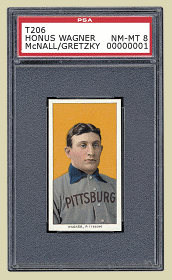
In 1914 the Cracker Jack Company of Brooklyn and Chicago began inserting baseball cards into its boxes of popcorn and peanut candy. This set (and the one that followed, in 1915) have become one of the iconic sets of the pre WW1 era, and one of the most popular baseball card sets of all time.
The 1914 set was issued as baseball was experiencing a semblance of stability, but that would be short lived. President Taft had thrown out the first pitch a few years earlier (in 1910), giving the sport even more recognition as the National Game, and stars such as Ty Cobb, Honus Wagner, Christy Mathewson and Shoeless Joe Jackson were either in their primes or near to it. Connie Mack’s Athletics and John McGraw’s Giants were the dominating teams of the era, and the dead ball era was in its golden age.
However, in 1914 a new league began raiding players from the established 2 leagues. While the Federal League would only last 2 seasons, those seasons corresponded exactly with Cracker Jacks offerings, and would be the only cards ever issued picturing Federal League players in uniform. In all, 50 Federal League players are pictured.Comparisons between the 2 sets are natural, since in many ways they are exactly the same. Both feature a player image on a red background, with “Cracker Jack Ball Players” across the top (occasionally bleeding over into the white border) and the player’s name and team affiliation at the bottom.
The ’14 set, however, contain 144 subjects, while the ’15 set adds another 32 players for a total of 176.‘14’s are printed on somewhat thinner paper stock, but both sets are on lighter weight paper (rather than cardboard) than most other issues. If you flip the card over the reverse of the ‘14’s are printed right side up, while the ‘15’s are flipped. The reason for this is that an album was offered with the ‘15’s, and the thinking was that if the cards were pasted in the album the backs should be upside down, so that the card need only be lifted up at the bottom to read the bio on the back.
Cracker Jacks have no white ink in the printing process, so that any areas in the image that are white should match the tone of the borders. This is a critical step in identifying forgeries. As there are few, if any, reprints of ‘14’s, the border matching and the upside down backs (reprints are not printed upside down) are the keys to avoid getting a fake.The ’14 set has an ad on the bottom reverse, stating that it is a series of 144 and either 10 million (cards 1-87) or 15 million (88-144) were issued. The ’15 set has an offer whereby a full set can be obtained via mail in for 100 coupons or 1 coupon and 25 cents. This accounts for a great number of pristine ‘15’s, while ‘14’s are often found stained and in much lower condition.
As stated above, the ’15 set took the first 144 cards of the ’14 and added another 32 cards. However, there are a few exceptions to this. Some players were changed, a few poses were altered, and some players changed teams. Taking this into account, a “master” set of all variations would total 199 different cards, not counting the ad on the back.
The key variations:#48 Harry Lord was replaced by Steve O’Neil in ’15#60 Rollie Zeider had 2 cards in ’14, 60 and 116, with different pictures. #60 was replaced with Oscar Dugey in ’15#62 Jay Cashion in ’14, Willie Mitchell in ’15#88 The big one. 2 players remained in both sets, but with pose changes. The most significant is Christy Mathewson. The ’14 is a pitching pose, the ’15 is a portrait. The ’14 is extremely desirable and is quickly becoming one of the most expensive cards of the era.#93 Derrill Pratt. Pose change, once again throwing to portrait.#99 Another highly desirable player change.
In addition, the following players cards reflected different team affiliations in ’15- 6,7,19,29,38,40,43,47,55,66,92,108,118,121,125,134 Lastly, the ‘14 Bresnahan (#17) comes with and without the number printed on the back.Horizontal cards are the same in both sets (with the exception of Matty) and command a premium over the standard vertical cards. They are:38 (Gandil), 40 (Austin), 43 (Marquard), 44 (Tesreau), 91 (Peckinpaugh),92 (Demaree), 95 (Keating), and 96 (Becker).
The album for the ’15 set consists of little more than an embossed tan cover over black pages. As it is not very desirable they don’t go for a premium- about $400. They were originally offered for 50 coupons or 1 coupon and 10 cents.Care must be taken when acquiring Cracker Jacks, as they are easily doctored. As staining is common they are prime candidates for bleaching, and this has often gone undetected by the major grading companies. Trimming is also common in raw cards.
SMR lists #32 in the ’15 set (Three Finger Brown) as being a very difficult card, which has no evidence to back up that claim. If any card can be considered tougher than others it would probably be Alexander. Jack Barry is also very tough to find well centered, and Frank Owen can be tricky as well.











